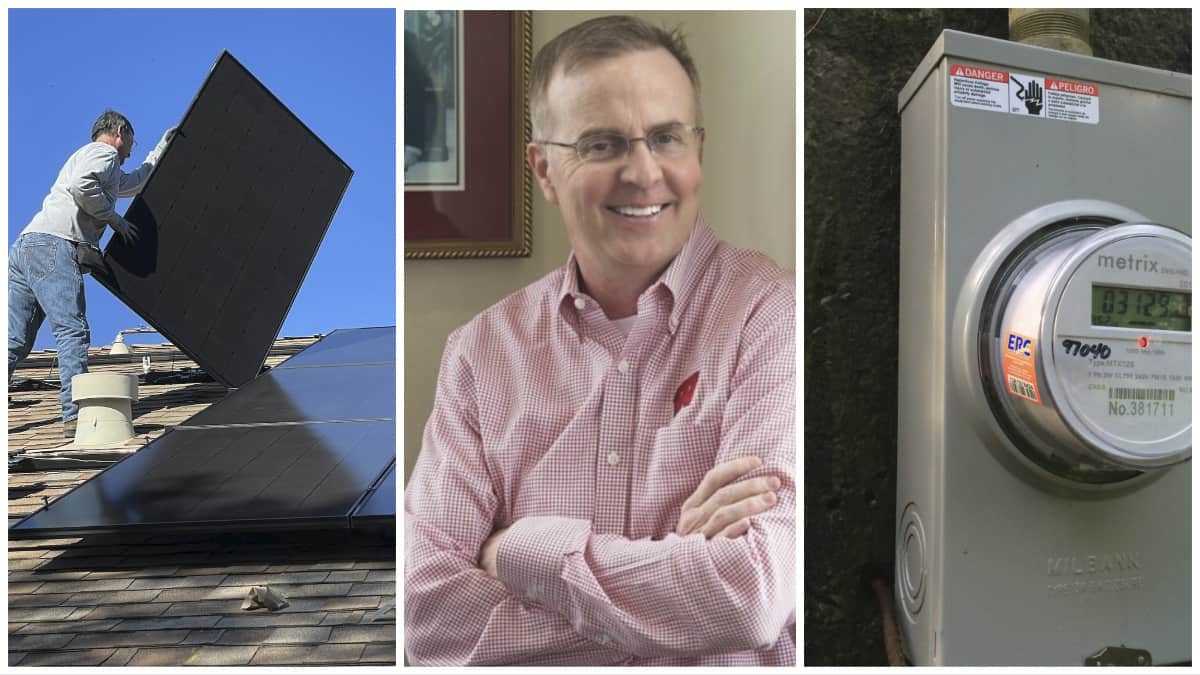The PSC recently rejected MGE’s request to end net metering. MGE proposed to drastically reduce payments (credits) to property owners who installed new solar arrays – thereby making solar installations infeasible. (MGE claimed that they would maintain the same credit level to existing solar customers, but I wouldn’t have bet on that.)
Net metering – that’s the term used to describe when the utility company provides a credit to property owners for solar energy delivered back to the electric company. Let me explain how this all works…
The only way that installing solar arrays makes any financial sense is if the utility company credits solar customers at the same rate that the utility charges for electricity (and you also receive a tax credit to reduce upfront costs). Even with fully-funded solar credits and tax credits, the solar credits barely cover the cost of the monthly debt service payments on the loan used to acquire the solar equipment.
Solar makes no sense in any Wisconsin utility territory except MGE because the other utilities only reimburse a fraction of cost of the electricity that customers deliver back to the electric utility, which is why I advocate that the PSC should mandate that all electric utilities should be required to reimburse solar at the same rate that they charge for electricity. Of course utility companies hate that idea. Why? Because they want a monopoly on solar; the last thing they want is for customers to have their own solar. Then customers know that they will get paid the same rate for their electricity long-term, which means they can then make a sound economic decision to make the investment in solar for their home or commercial building as well as take out a loan to pay for the solar installation.
The utilities would rather invest tens of millions of dollars in giant solar farms, including the land cost, equipment and solar panels, in addition to the high investment cost of shipping that solar farm electricity back to the electrical plant, where it has to be redistributed to customers.
Very inefficient. Now you’re asking, why would the utility company want to spend tens of millions on solar farms when they can save all that money and instead simply pay customers for their solar energy? Because those electrical companies are guaranteed, yes, guaranteed a specific rate of return on their investment. This means that the more the company invests, the more they make, regardless of whether it makes any economic sense or not. That means that if they invest a hundred million dollars in new solar farms, they get a specific rate of return on those dollars.
Why does net metering and customer based solar make the most sense? First, because power plants have to be built to handle peak demand. When does peak demand occur? On hot July and August afternoons. Other than that, the power plant does not operate at peak demand, and in fact, it has excess capacity that goes unused. And with power plant peak demand requiring larger power plants as community electricity demand grows, the utilities can reduce peak demand by receiving a lot of solar electricity from their customers.
Picture a graph line when peak demand occurs, peaking in July and August, then picture that line being lowered during just July and August due to customer solar energy coming in. This means that the utility does not have to expand the plant and does not have to build a new plant because they would be able to delay or permanently postpone new construction – because more and more solar energy is delivered by customers, especially new customers as the come online and add solar panels.
Second, because the customers are making the investment in solar instead of the utility company, the utility company does not have to invest tens of millions in new construction nor in huge, unsightly solar farms. Win—win! Except that’s not what the utility companies want. They want a solar monopoly in their monopoly territories.
And third, because the utility doesn’t have to expand or build a new plant or a solar farm, the utility wouldn’t have to raise their rates as high, because they don’t need the investment dollars and they don’t need to earn a return on the investment they didn’t make. Did you ever notice how local utility companies are asking for larger and larger rate increases while simultaneously building solar farms that should, in theory, bring down the cost of electricity! The way they have it set up is that we customers pay more as they build solar farms and harvest the sun’s free energy! What a great deal for them and a lousy deal for us!
Fourth, solar installed at the point of use makes the most sense. Why have gigantic solar farms located far from the customers and from the power plat that require massive distribution systems to push the electricity first to the power plant and second, to the customers. It’s nuts.
As background, I’ve been a pioneer in sustainable development since the beginning. My team and I taught non-profit Focus on Energy when it first came into being, how to install and make green energy components work, so much so that during their first five years, they paid half the salary of my in-house engineer because they were calling on him so much to figure things out that he was practically working for them. (Good for them though, right? They wanted to know what worked and what didn’t.)
I’ve done heat recapture systems, an in-ground geothermo heat pump HVAC system, low flow water systems, extra insulation, and I installed the largest solar array on an apartment building east of the Mississippi River. I also created the first university level sustainable development course in the world at the UW that is still being taught today.
Lastly, it’s important to understand that the amount of solar energy that is generated by the sun in July and August provides enough credits in those two months to offset the lack of net solar energy in the other ten months. In other words, the other ten months don’t generate net solar energy in northern climates; instead, you draw energy from the power plant during those months, but in July and August, solar generates surplus electricity that is shipped back to the utility, who provides you a credit you can use year round until it’s used up. Unlike windmills, this means that the amount of customer solar energy is maximized exactly when the utility needs it, during the peak months of July and August. It’s a perfect marriage.
Net metering is absolutely necessary in order for property owners to make installation of solar panels financially feasible. Without net metering, there will be few customer solar installations as it won’t make sense. But with fully funded net metering we can encourage more solar, reduce utility costs, and keep our utility rates lower. Support net metering, write the PSC.
On October 18 and November 23, 2023 Donald Trump tweeted out on Trump’s Truth Social account T. Wall’s October 6th column on Trump’s property valuations. T. Wall holds a degree from the UW in economics and an M.S. in real estate analysis and valuation and is a real estate developer. Disclaimer: The opinions of the writer are not necessarily those of this publication or the left!






![WATCH: Elon Musk Town Hall Rally in Green Bay [FULL Video]](https://www.wisconsinrightnow.com/wp-content/uploads/2022/04/Elon_Musk_3018710552-265x198.jpg)



![The Great American Company [Up Against the Wall]](https://www.wisconsinrightnow.com/wp-content/uploads/2025/03/MixCollage-29-Mar-2025-09-08-PM-4504-265x198.jpg)
![The Wisconsin DOJ’s ‘Unlawful’ Lawman [WRN Voices] josh kaul](https://www.wisconsinrightnow.com/wp-content/uploads/2025/03/MixCollage-29-Mar-2025-08-48-PM-2468-265x198.jpg)
